Living, breathing, and delightful. Plants have found their way into interior spaces and have quickly become an indispensable part of home decor. Their vibrant colors and natural beauty add a touch of richness to any room. But it's not just aesthetics; using plants in interior design also offers numerous health benefits. So whether you're a seasoned plant enthusiast or a beginner, read on to discover everything you need to know about incorporating greenery into your home!
Interior Decorating with Plants Tips and Tricks
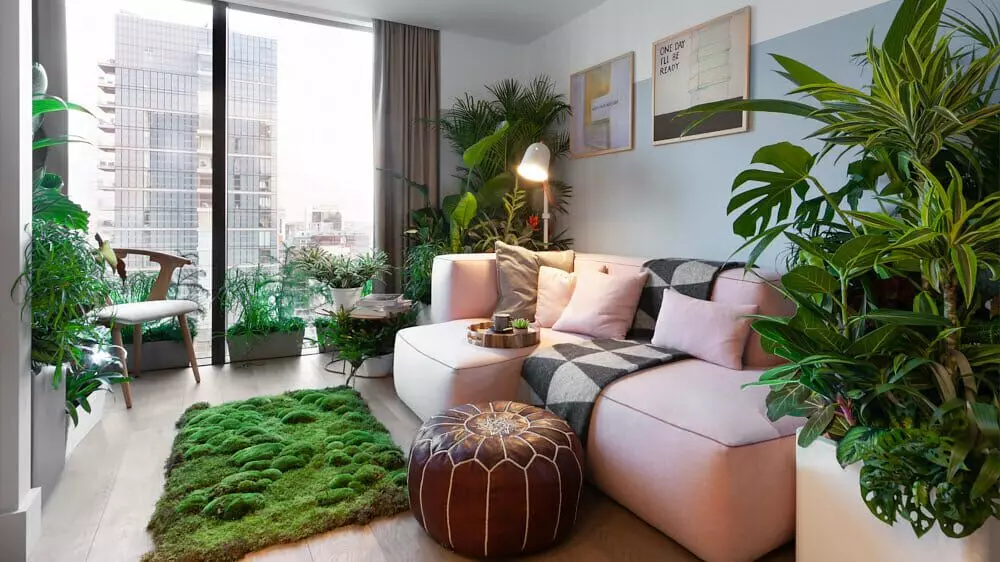 Plants in kitchen interior design by Decorilla designer, Christian G.
Plants in kitchen interior design by Decorilla designer, Christian G.
The practice of indoor plant design dates back thousands of years. In ancient China, pot plants were seen as a symbol of nobility and status. They were purely ornamental, adding a touch of elegance to homes. Today, interior decorating with plants is more accessible than ever, with flower markets and nurseries popping up in every neighborhood. To create a flourishing space, you can start by following a few basic principles of interior design with plants. Here are some tips to get you started:
Assess Your Space

Plants can be incorporated into any room, regardless of its size. However, it's important to consider which types of plants will work best in your specific space. For smaller rooms with limited surface areas, opt for kokedamas or wall planters. On the other hand, spacious family rooms with high ceilings can accommodate large potted trees. Additionally, you can create a living decoration by dedicating a shelf solely to plants.
Get to Know Your Plants
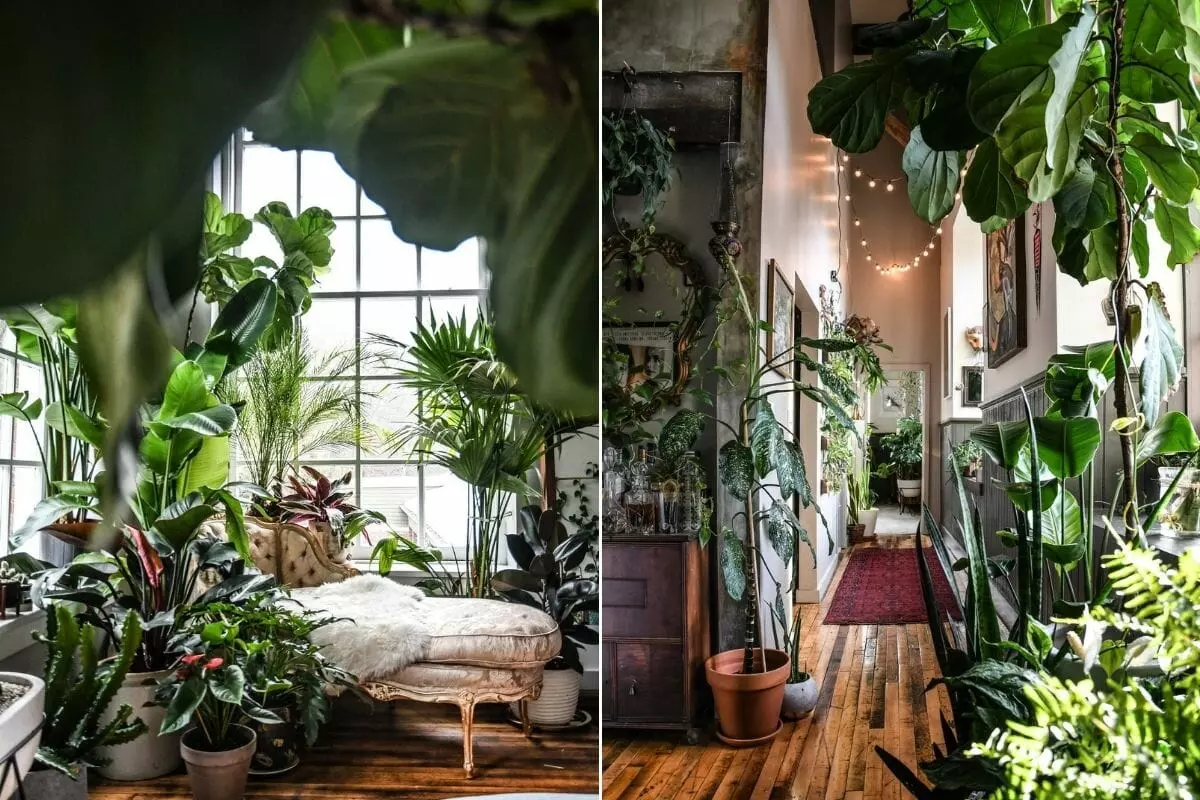
When decorating with plants indoors, it's crucial to familiarize yourself with their sunlight and watering requirements. You'll find a wide range of low-maintenance greenery options, including shade-loving, sun-loving, and evergreen plants. Understanding the needs of your plants will ensure they thrive in your interior space.
Pick the Right Container
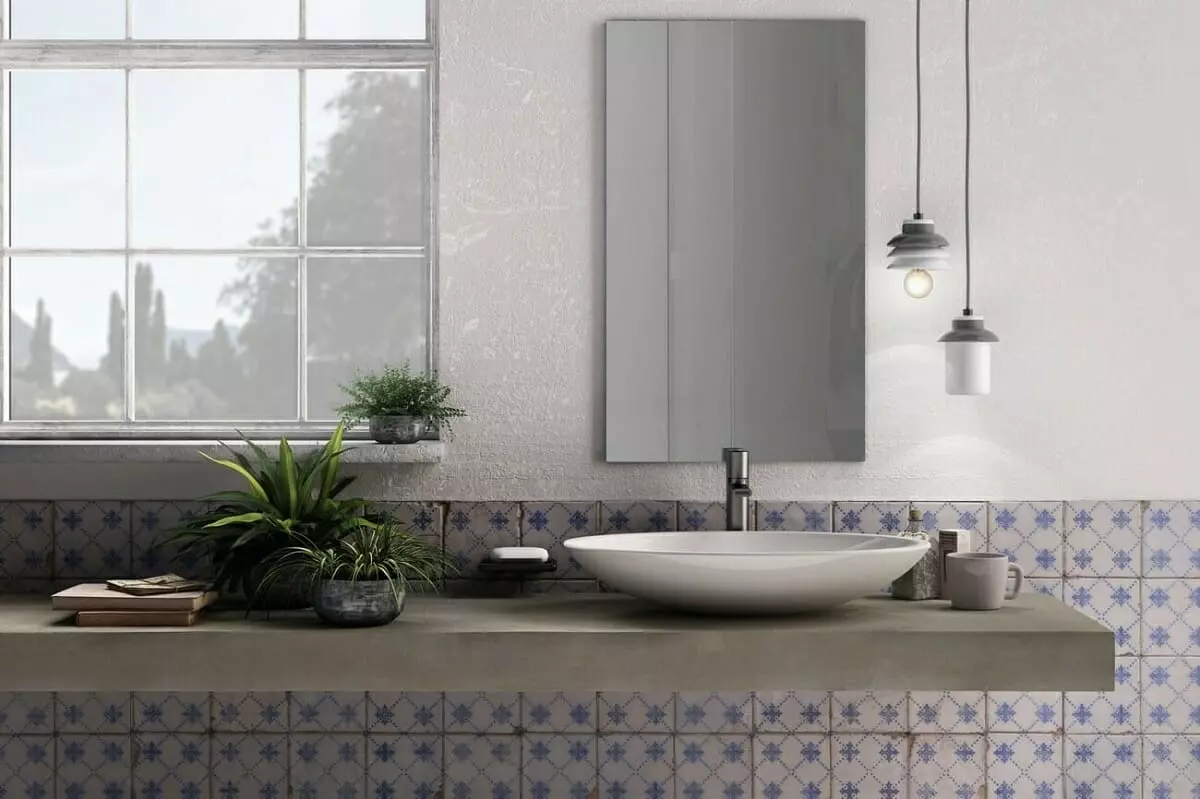 Delicate indoor plant design by Decorilla designer, Christian G.
Delicate indoor plant design by Decorilla designer, Christian G.
Choosing the right pot or planter box is essential. It should not only match your interior style but also be spacious enough to accommodate the necessary soil and drainage system. You can even explore wall-mounted arrangements, such as moss or herb walls, for a unique touch.
Play with Heights & Sizes
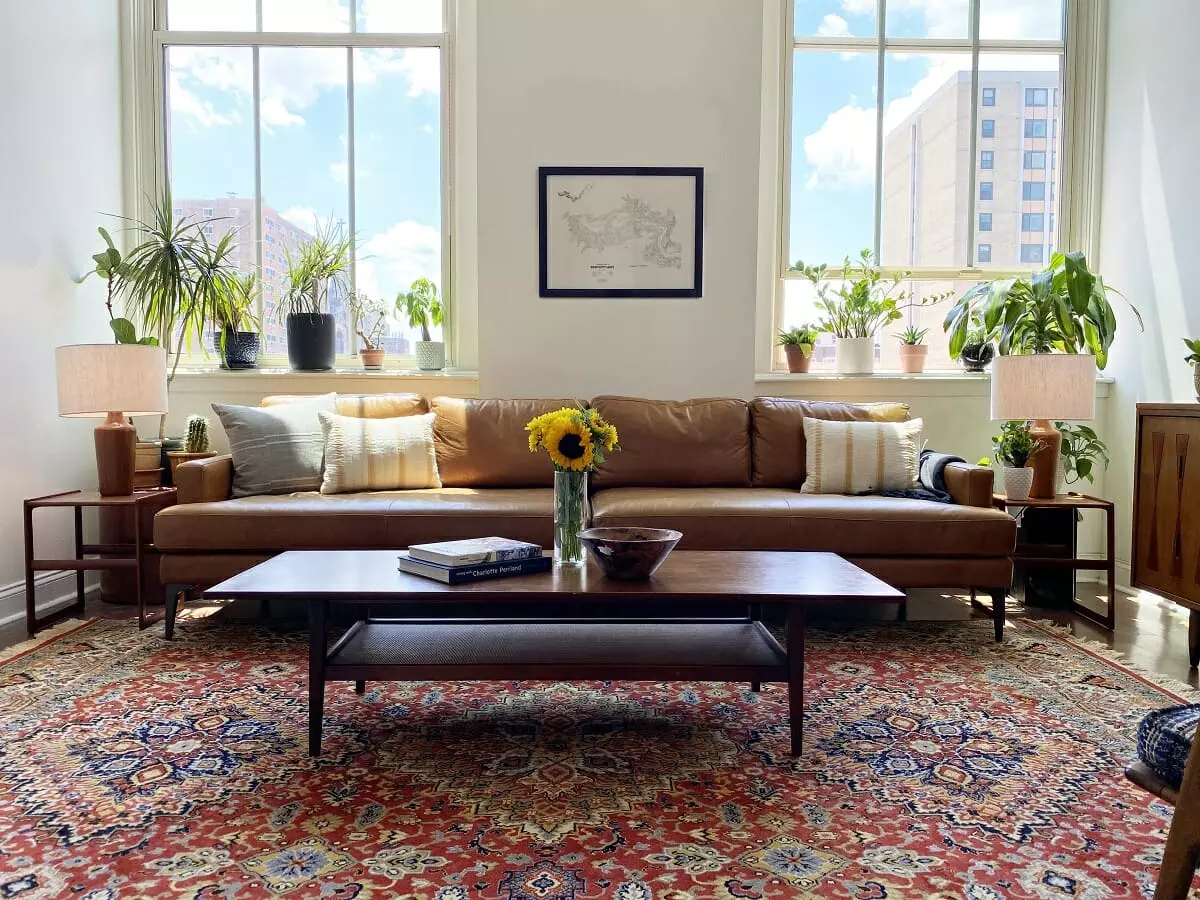 Living room design with plants by Decorilla designer, Amy C.
Living room design with plants by Decorilla designer, Amy C.
Take advantage of both vertical and horizontal space in your interior. Create a balanced vignette by arranging plants of varying heights and sizes in clusters. This adds visual interest and harmony to your space.
Best House Plants for Interior Design
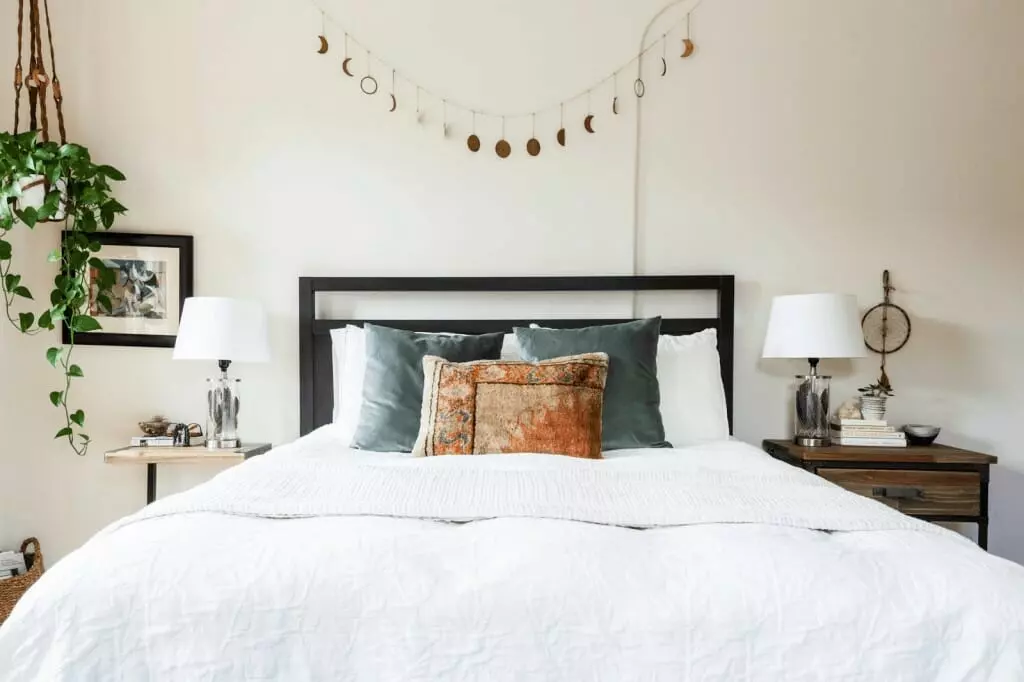 Interior decorating with plants by Decorilla designer, Tiara M.
Interior decorating with plants by Decorilla designer, Tiara M.
While all plants can bring life to your interior design, some thrive better than others. Here are a few hardy, fast-growing, and visually stunning plants that are perfect for interior spaces:
1. Sweetheart Plant
 Cascading sweetheart plant in a bedroom by Decorilla designer, Christine M.
Cascading sweetheart plant in a bedroom by Decorilla designer, Christine M.
The sweetheart plant is a versatile climber that adds a touch of elegance to any space. Its trailing vines and bronze-to-green leaves make it an exceptional focal point. However, be cautious as the plant can irritate the skin and eyes. Keep it out of reach from children and pets.
Sweetheart Plant Care: Place it in low to medium sunlight and water it weekly.
2. Fiddle Leaf Fig Tree
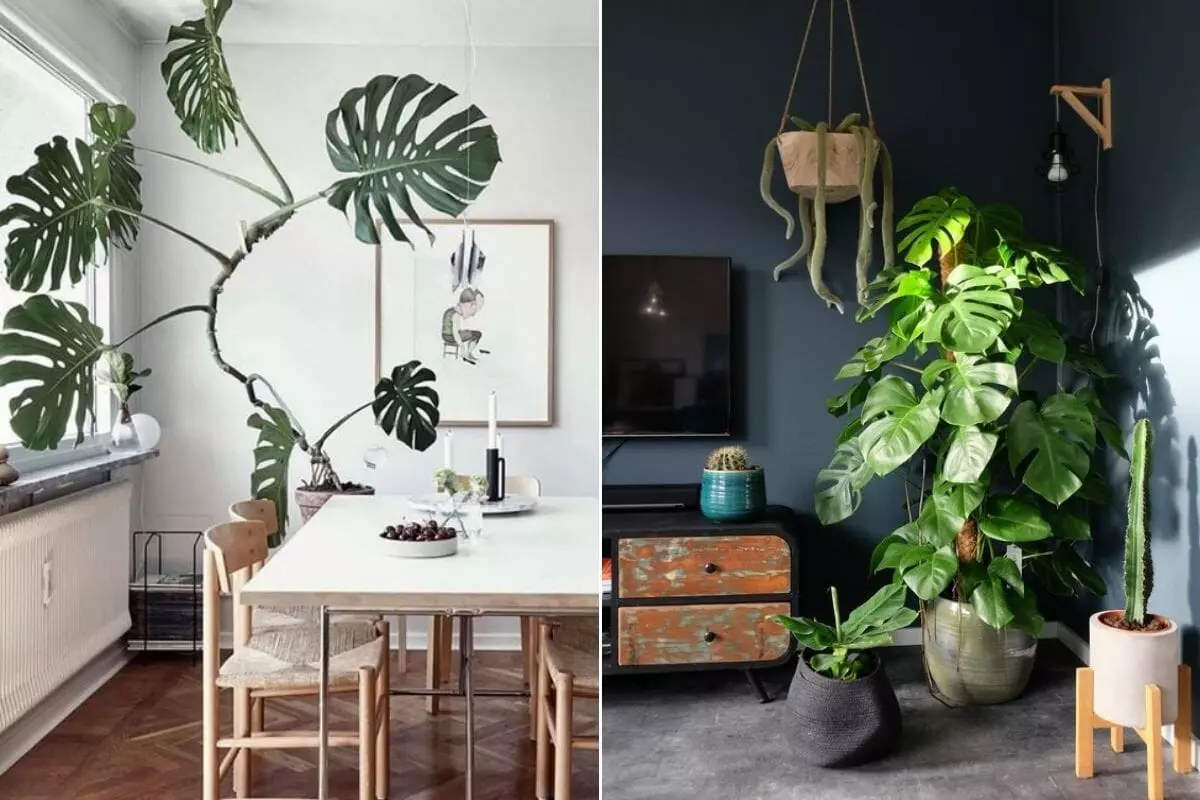 Scandi interior decorating with plants by Decorilla designer, Darya N.
Scandi interior decorating with plants by Decorilla designer, Darya N.
The fiddle leaf fig tree is a popular choice for interior design. Its evergreen, paper-like leaves are both beautiful and sturdy. This low-maintenance plant is a wonderful addition to living rooms.
Fig Tree Care: Place it in a sunny spot and water it once a week or more when the soil is dry.
3. Monstera

Monstera plants, also known as delicious monsters, are perfect for low-maintenance interior design. They thrive with minimal attention and sunlight. You can choose a large wing-leaf monstera for a bold feature or a split-leaf Philodendron for a delicate and artistic look.
Monstera Plant Care: Water it once a week and ensure it stays in a shaded area.
4. Palm
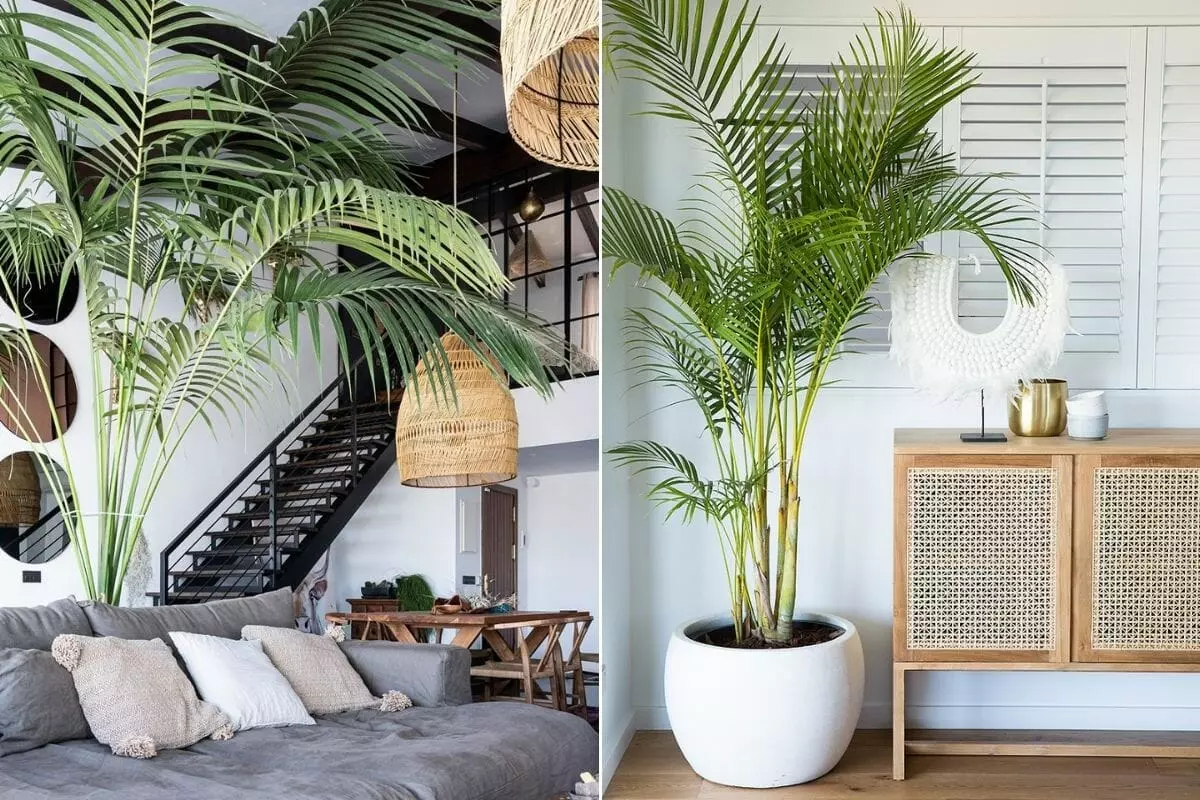
Palm trees come in various shapes and sizes, but they all offer lush fronds that create an enchanting ambiance. They work well as small desk plants or as grand features in larger rooms.
Palm Plant Care: These sturdy greens need partial to full sun and should be watered weekly.
5. Snake Plant
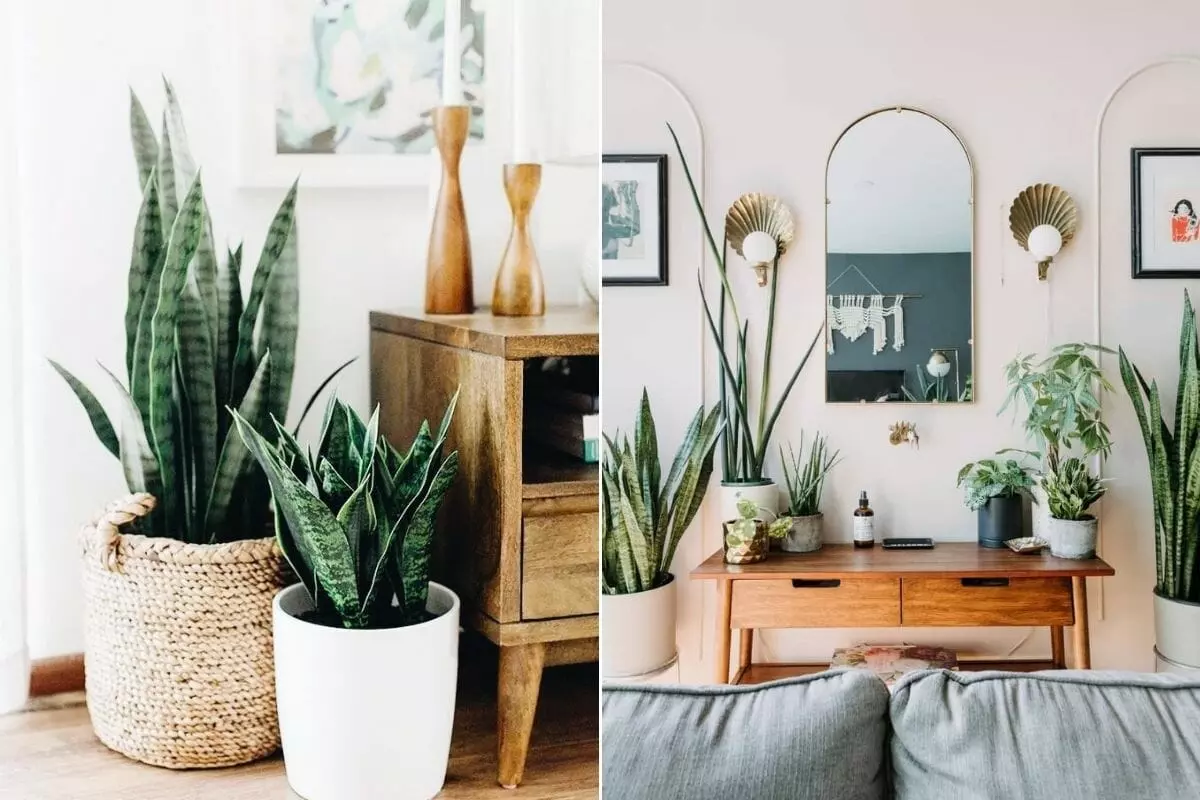
The snake plant, also known as mother-in-law's tongue, is a sculptural beauty that can thrive in most conditions. It is extremely hardy and known for its air-purifying properties. Snake plants can absorb harmful chemicals, such as benzene and formaldehyde.
Snake Plant Care: Place it in indirect sunlight and water it infrequently, allowing the soil to dry between waterings.
6. Air Plants (Tillandsias)
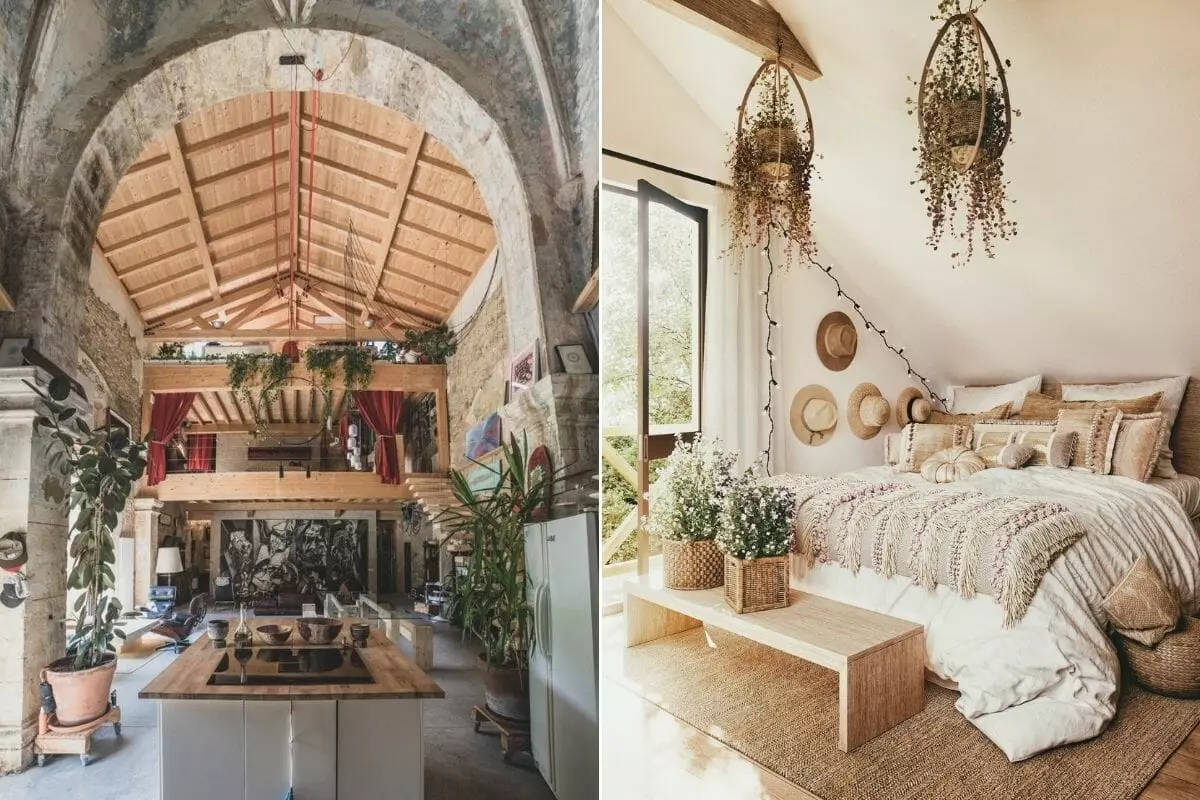
Air plants and succulents require minimal maintenance and care, making them ideal choices for interior design. Air plants, in particular, require no soil and can be attached to any stable object. They are perfect for glass terrariums or wall-mounted vases.
Air Plant Care: They need full or indirect sunlight, and misting once a week is sufficient.
Faux vs Real Plants in Interior Design
 Faux and real plants in interior design by Decorilla designer, Rehan A.
Faux and real plants in interior design by Decorilla designer, Rehan A.
At times, you may find yourself deciding between real and artificial plants for your interior design. Each option has its pros and cons. However, when incorporated thoughtfully, both real and faux plants can enhance your space. Let's explore the benefits and drawbacks of each:
Faux Plants in Interior Design
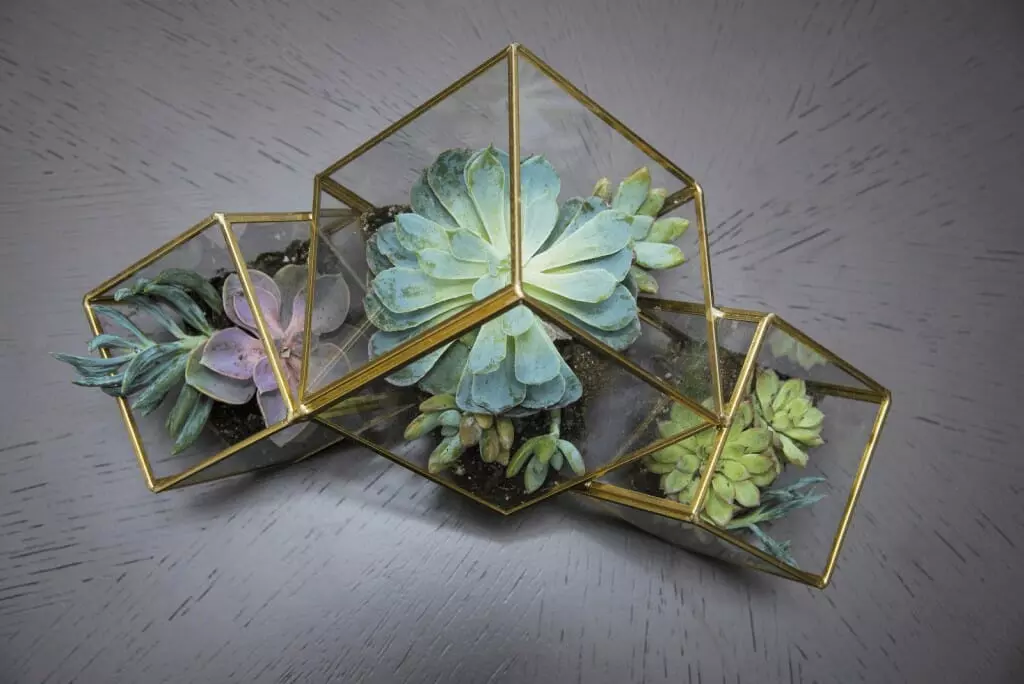 House plants for interior design by Decorilla designer, Mary Ann R.
House plants for interior design by Decorilla designer, Mary Ann R.
Faux plants are an excellent choice for commercial spaces or areas that are hard to access. Here are the advantages and disadvantages of using artificial plants:
Benefits of Faux Plants
- Cost-Effective: Faux plants require no ongoing care, making them a one-time investment.
- Reduced Maintenance: They require minimal effort, with no need to remember watering schedules or provide sunlight.
- Allergy-Friendly: Artificial plants are ideal for those with allergies, as they don't produce pollen or allergens.
Drawbacks of Faux Plants
- Unchanging: Artificial plants do not grow or change over time like real plants.
- No Air Cleaning: They do not offer the air-purifying benefits that real plants provide.
- Aging: Faux plants can fade and collect dust over time, losing their original appearance.
Real Plants in Interior Design
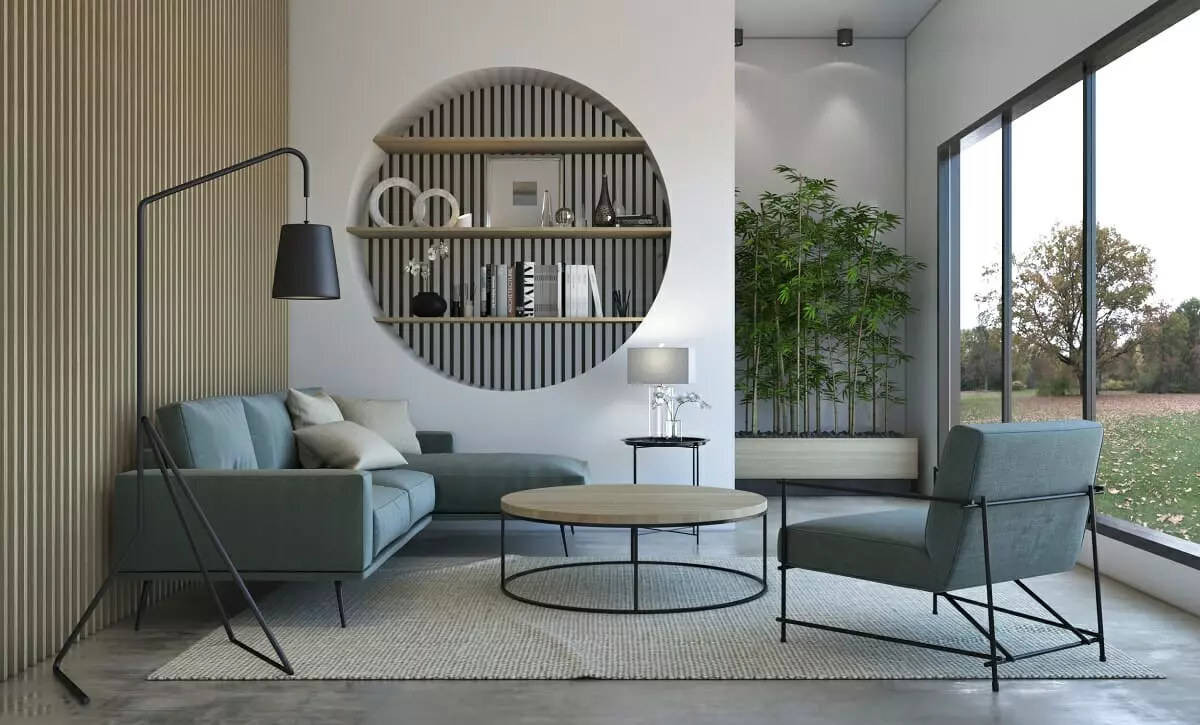 Interior decorating with bamboo plants by Decorilla designer, Shofy D.
Interior decorating with bamboo plants by Decorilla designer, Shofy D.
Interior decorating with real plants brings numerous benefits to your space. Let's explore the advantages and disadvantages of using live plants:
Benefits of Real Plants
- Mood-Boosting: Real plants can uplift your mood and create a positive atmosphere.
- Increased Productivity: Plants in your home office or study can improve focus and concentration.
- Air Purifying: Some plants absorb toxins from the air, improving indoor air quality.
Drawbacks of Real Plants
- Maintenance: Real plants require regular care, including watering, trimming, and rotation.
- Continual Care: You'll need to find a plant-sitter if you're away for an extended period.
- Messy: Plants naturally shed leaves, requiring periodic cleaning, and may appear dull when not well-maintained.
Placement for Perfect Indoor Plant Design
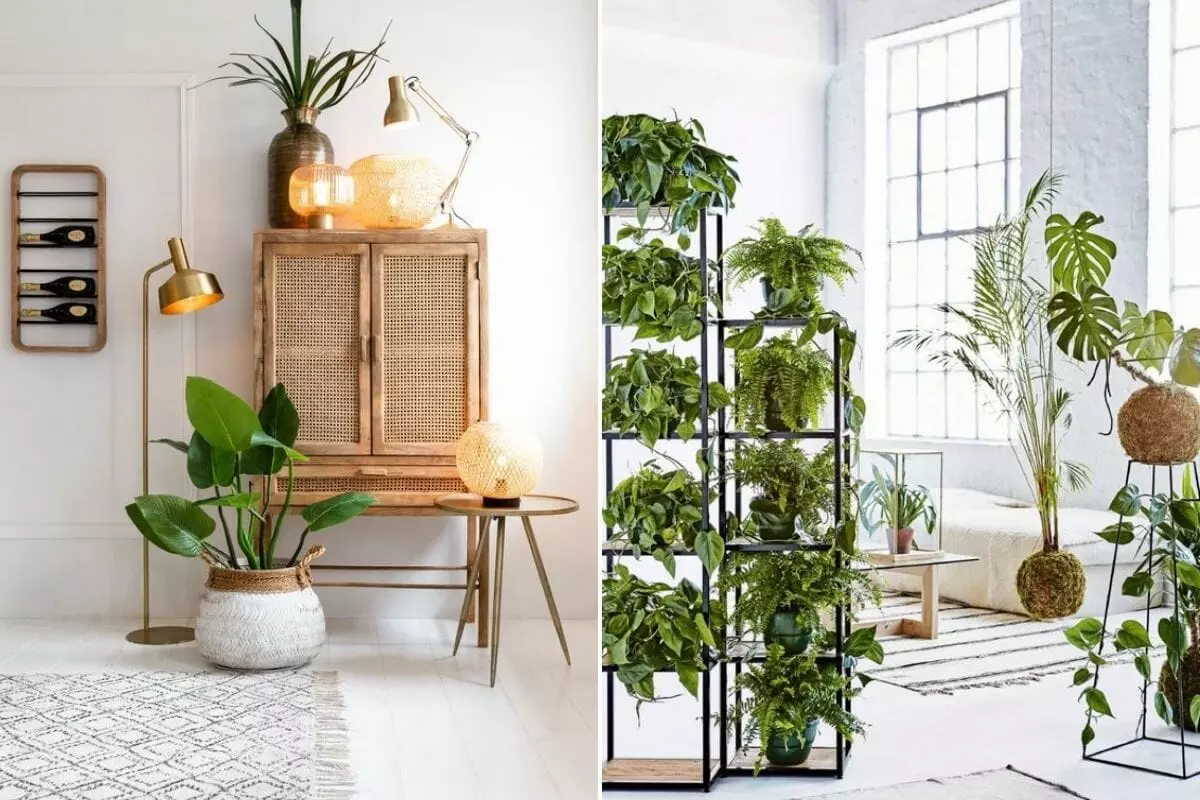 Indoor plant design by Decorilla designer, Jessica S.
Indoor plant design by Decorilla designer, Jessica S.
Now that you have an understanding of plants in interior design, it's time to consider their placement. Here are a few ideas to help you incorporate greenery into your space:
Green Pops on Shelves

Elevate your interior design by placing one or two plants on open shelves. Create an asymmetrical look by arranging them at different heights. This simple addition can enhance any interior style.
Dangling from the Ceiling
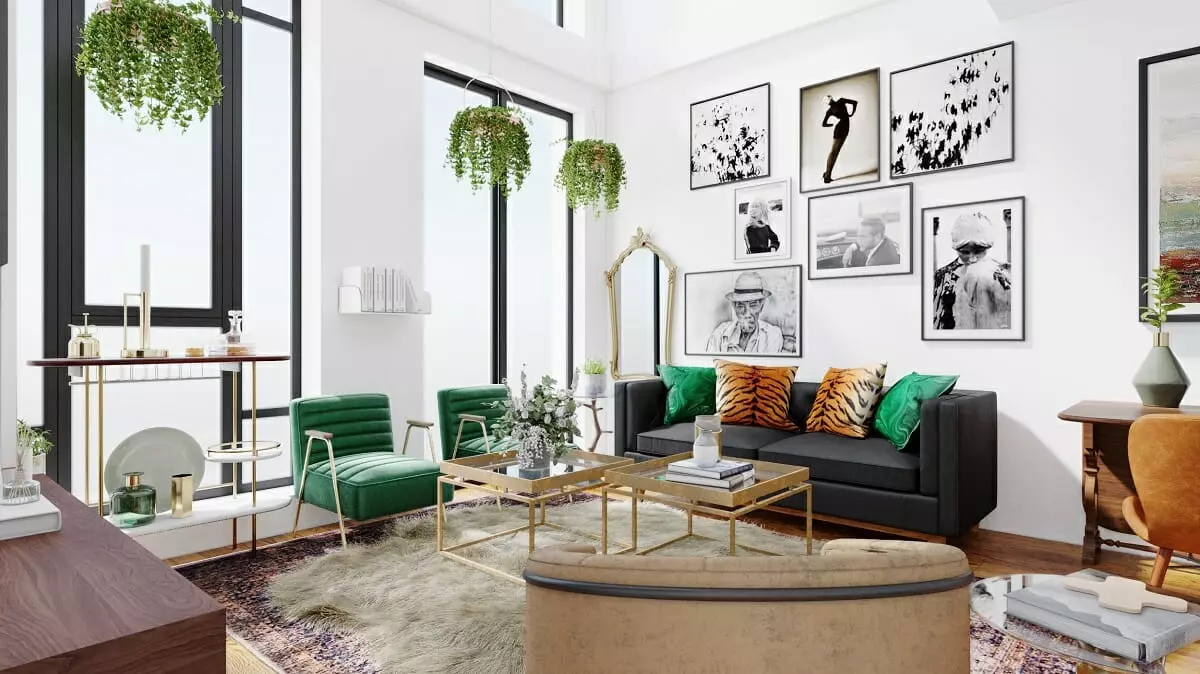 Eclectic living room design with hanging plants by Decorilla designer, Wanda P.
Eclectic living room design with hanging plants by Decorilla designer, Wanda P.
Maximize your space by utilizing hanging baskets or kokedamas that can be suspended from the ceiling. This clever solution keeps surfaces clear while bringing refreshing greenery into your bathroom, bedroom, or study.
As Wall Art
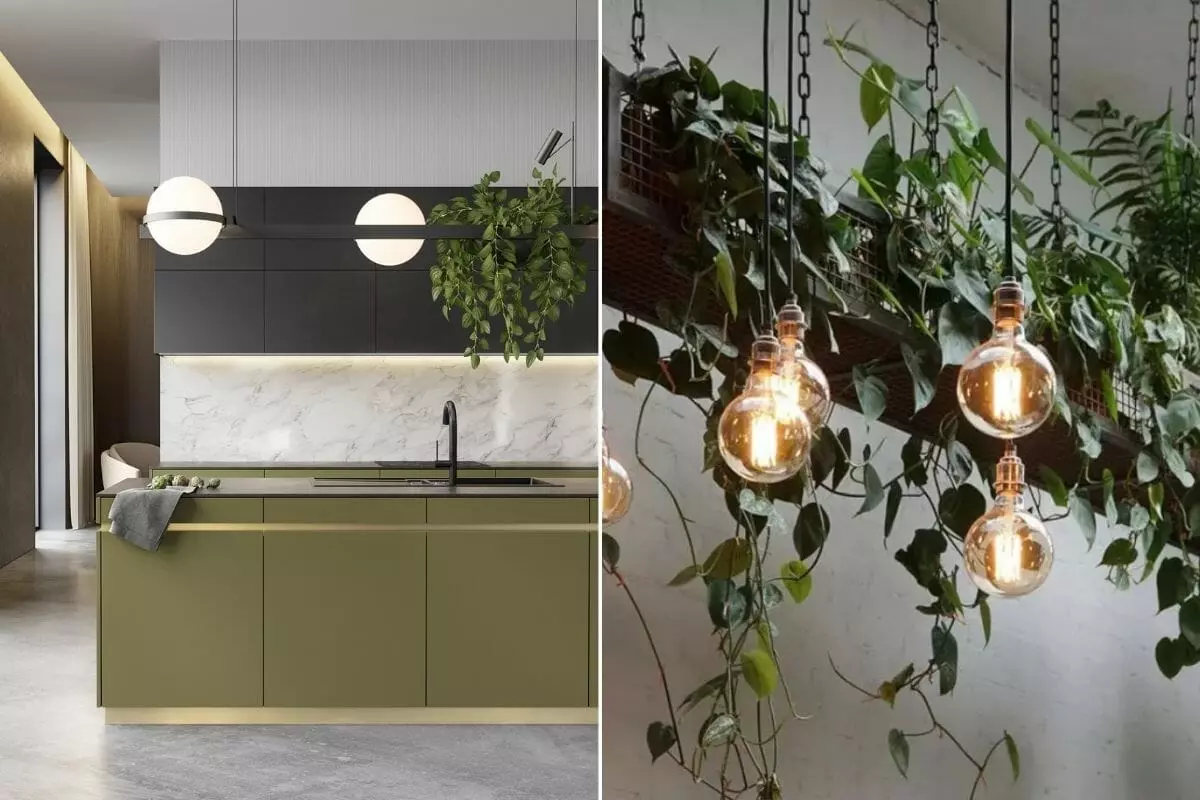
Make a statement by turning plants into wall art. Create geometric arrangements using air plants or even a vertical herb garden. These arrangements take up minimal space while adding a unique touch to your walls.
Complementing a Statement Light

Combine vines with a pendant light to create a captivating focal point. Wrap the plant's vines around the light fixture, such as Devil's Ivy or a climber air plant. This simple addition can transform an ordinary space into something extraordinary.
Green Room Divider
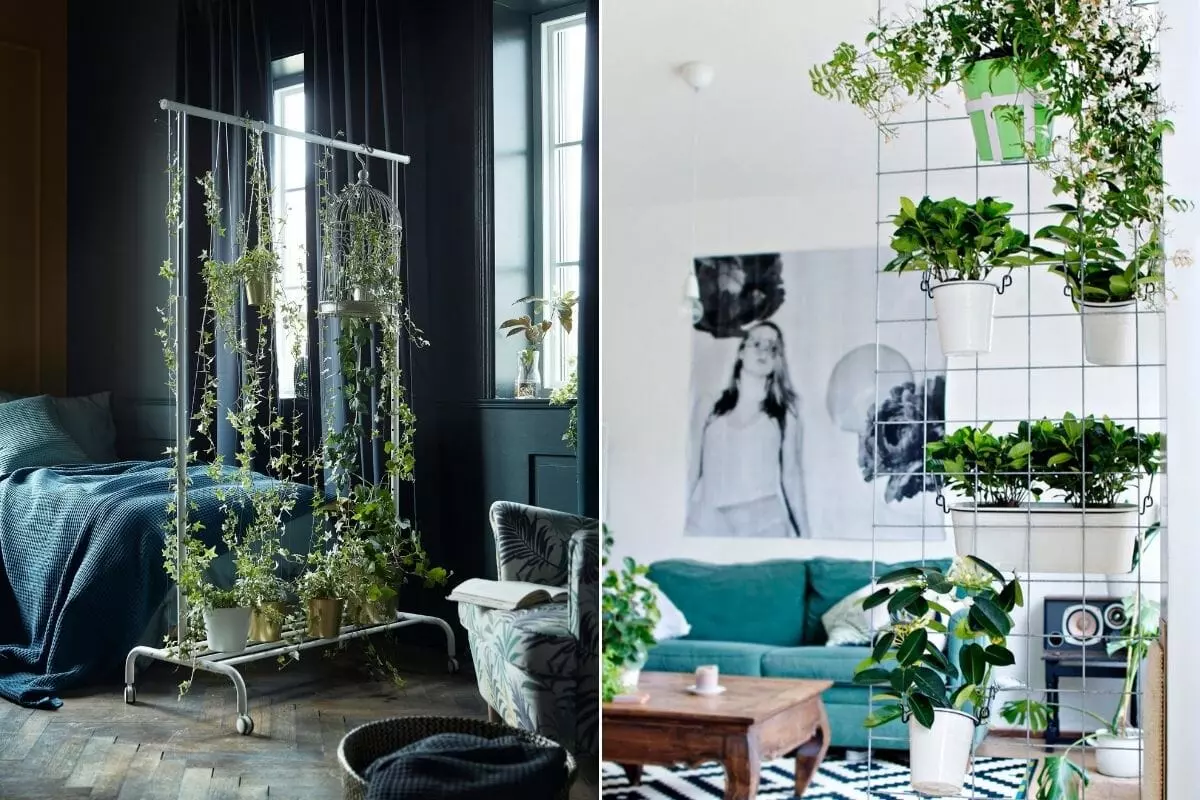
Make a functional and stylish statement by using large potted palms or fig trees as room dividers. Not only will this create a sense of separation, but it also adds a touch of nature to your interior design.
Want to include plants in your interior design?
Not only can you perfect your indoor plant design, but you can also create your dream interior with the help of professional online design services. If you want to learn more, schedule a Free Online Interior Design Consultation today!
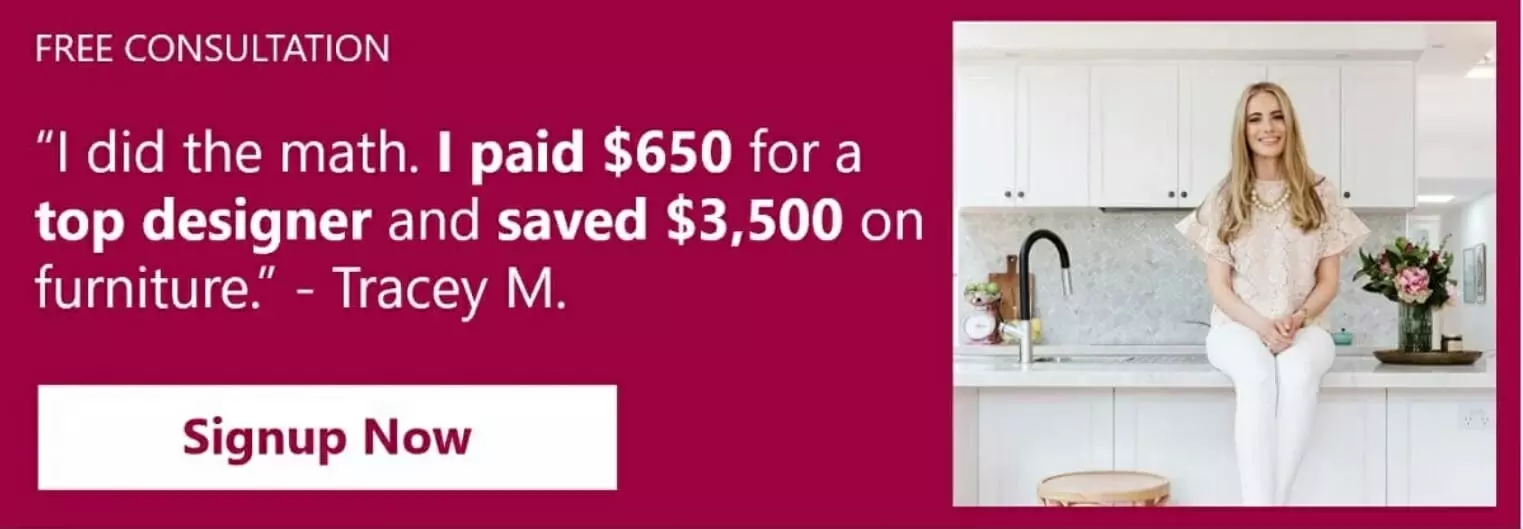
[Images: 1, 2, 3, 4, 5, 6, 7, 8, 9, 10, 11, 12, 13, 14, 15, 16, 17, 18, 19, 20, 21, 22, 23, 24, 25, 26, 27, 28, 29, 30, 31, 32, 33, 34, 35, 36, 37]












